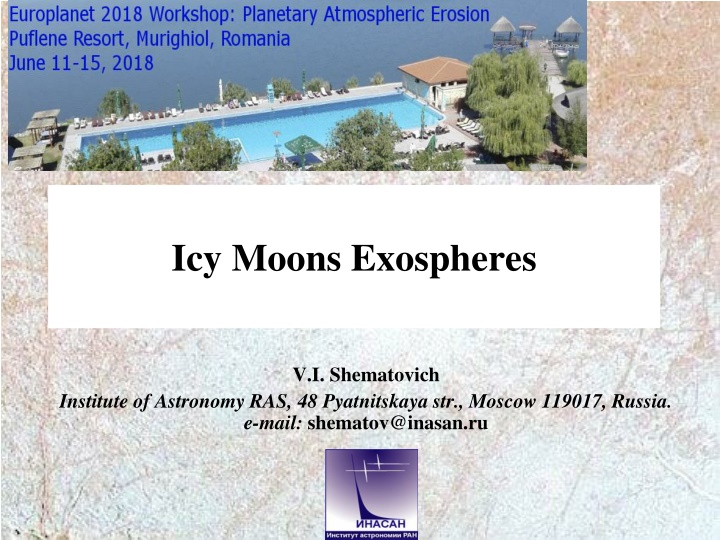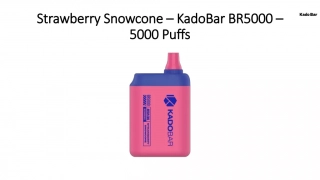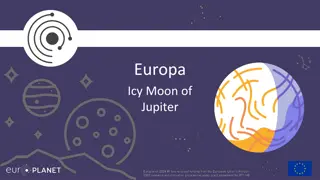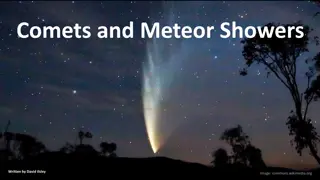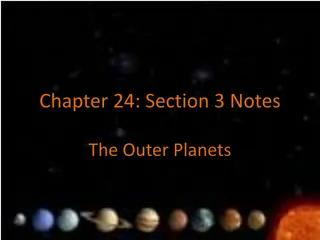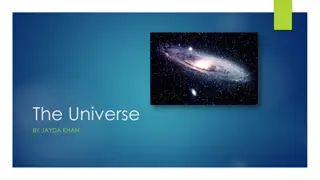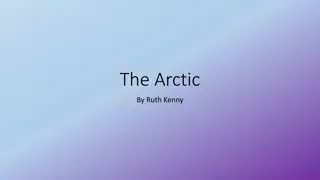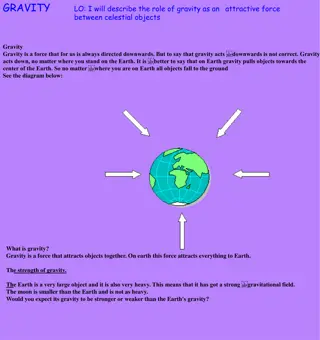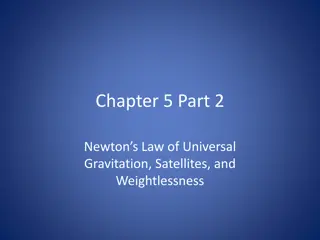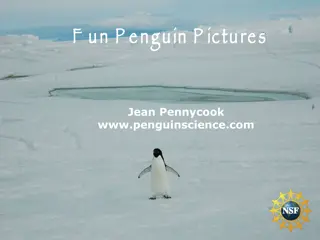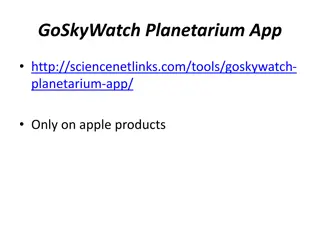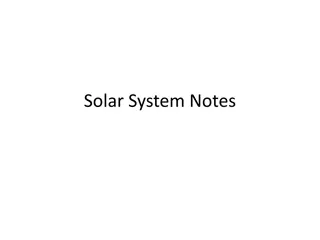Icy Moons Exospheres
"Icy moons exospheres play a crucial role in understanding the surface composition and chemistry, studied through observations and modeling. Explore planetary atmospheres, escape regimes, and atmospheric modeling of icy moons or ocean worlds, revealing insights into their complex structures and behaviors."
Download Presentation

Please find below an Image/Link to download the presentation.
The content on the website is provided AS IS for your information and personal use only. It may not be sold, licensed, or shared on other websites without obtaining consent from the author.If you encounter any issues during the download, it is possible that the publisher has removed the file from their server.
You are allowed to download the files provided on this website for personal or commercial use, subject to the condition that they are used lawfully. All files are the property of their respective owners.
The content on the website is provided AS IS for your information and personal use only. It may not be sold, licensed, or shared on other websites without obtaining consent from the author.
E N D
Presentation Transcript
Icy Moons Exospheres V.I. Shematovich Institute of Astronomy RAS, 48 Pyatnitskaya str., Moscow 119017, Russia. e-mail: shematov@inasan.ru
Atmospheric modeling: outline Some of icy moons are the ocean worlds, i.e., objects with a certain probability of their ocean habitability. Exospheres of the icy moons are the surface-bounded atmospheres formed due to the thermal and non-thermal sources. Exospheres of the icy moons are indicators of the surface composition and chemistry and currently are studied by both observations and modeling before in situ measurements by JUICE and EUROPA CLIPPER spacecraft.
Planetary atmosphere: vertical structure Macroscale height scale H(h)=kT(h)/mg(h) Microscale - mean free path (h)~(n(h)* )-1 Knudsen number= (h)/H(h): Kn << 1 - hydrodynamics (GD) Kn >> 1 free molecular dynamics (MC) Transition region ~ 0.1-1 (DSMC)
Planetary atmosphere: description Macroscale height scale H(h)=kT(h)/mg(h) Microscale - mean free path (h)~(n(h)* )-1 1D DSMC model: O2scales Knudsen number= (h)/H(h): Kn >> 1 free molecular dynamics (MC) Transition region, where Kn ~ 0.1-1 (DSMC)
Planetary atmosphere: escape Thermal and non-thermal atmospheric escape regimes
Planetary atmosphere: escape Texo~ 1000 K Thermal escape evaporation. For hot jupiters and neptunes (close-in exoplanets) Texocould approach 8 000 10 000 K, therefore hydrodynamic outflow of the atmosphere is observed!
Atmospheric modeling: icy moons or ocean worlds
Atmospheric modeling: icy moons Icy moon surface composition determines the composition of its atmosphere. The surface is predominantly water ice with impact craters, ridges, possibly melted regions and trace species determining how its appearance varies. Icy moon surface is dominated by oxygen rich species H2O and its radiolysis product O2, surface chemistry product H2O2, trace species SO2and CO2; Surface sputtering is the dominant source of H2O, O2, and H2, also sublimation of H2O is competitive at the subsolar point; Atmospheric loss occurs by escape, interaction with the ambient plasma and solar UV photons, or by removal through interaction with the surface, e.g., the sticking (freezing) of H2O to the icy surface; Non-thermal surface source - ~ 2% of the O2and ~24% of the H2O are directly ejected into the Jovian magnetosphere. For thermally accommodated O2escape is negligible, but for H2about 7% escape at the average temperature ~100K and ~15% at the subsolar point ~130K.
Lower boundary Radiation-induced ice chemistry (Johnson, 2010): Atmosphere-surface interface: Radiolysis can occur to depths of the order of tens of centimeters because of the penetration of the energetic component of the incident radiation (Cooper et al., 2001; Paranicas et al., 2001). Mixing of these radiolytic products to greater depths occurs because of meteoroid bombardment (Cooper et al., 2001). This bombardment also produces a porous regolith (Buratti, 1995) composed of sintered grains (Grundy et al., 2001), which increases the effective radiation penetration depth.
Lower boundary icy satellite surface: (i) Sputtering of icy surface by magnetospheric ions with energies of ~ 10 -1000 keV (Cooper at al. 2001; Fama et al., 2005; Galli et al., 2017) results in the ejection of parent molecules H2O and their radiolysis products O2and H2with energy spectra (Johnson et al. 1983) non-thermal source = = = = = = = = q UE + + q = = 0 , c , U 1 . 0 015 eV,i O surface i 2 F (E) c , + + = = = = = = 2 q (E U) q , c 1 , U 2 . 0 055 eV,i H O 2 Fig. 1. Energy spectra of the sources of parent O2molecules at the icy surface. The solid line (spectrum f1) corresponds to sputtering of the icy surface by high- energy magnetospheric ions (nonthermal source). The dashed line shows thermal sources f2such as photolysis, evaporation, and micrometeoritic impacts for the temperature kT = 0.0086 eV at Europa s surface.
Lower boundary icy satellite surface: (ii) UV-photolysis of the icy satellite surface leads to the ejection of H2O and O2with Maxwellian energy distribution with the mean surface temperature T ~ 100 K, thermal source; (iii) Returning O2molecules are desorbed thermally thermal source. Returning H2O, O, and OH stick with unit efficiency loss term. ( i kT E (E) F 2 surface ) exp( / ) E kT s s Fig. 1. Energy spectra of the sources of parent O2 molecules at the icy surface. The solid line (spectrum f1) corresponds to sputtering of the icy surface by high- energy magnetospheric ions (nonthermal source). The dashed line shows thermal sources f2such as photolysis, evaporation, and micrometeoritic impacts for the temperature kT = 0.0086 eVat Europa s surface.
Upper boundary ~ 4001000 km from the surface: (i) Influx F ~ 108- 109 cm-2 s-1of the magnetospheric ions with maxwellian or kappa-function energy spectrum with characteristic energies ~ 1 - 10 keV (Bagenal, 1994); (ii) Atmospheric sputtering is caused mainly by O+ions; (iii) Atmospheric particles which cross 400 km altitude with energies higher than the escape energy enter the inner Jovian magnetosphere.
Atmospheric modeling: processes Photolysis: Ionization, dissociation and dis. ionization by solar UV radiation and photo- and plasma electrons: dissociation and dissociative ionization products are formed with an excess of the kinetic energy. Atmospheric sputtering: Momentum transfer, dissociation, ionization, and charge transfer in collisions with magnetospheric ions: dissociation and dissociative ionization products are formed with an excess of the kinetic energy. In the system under study there are: -non-thermal source at surface; - space-distributed non-thermal source due to photolysis and atmospheric sputtering. -These sources result in the production of suprathermals!
Hot or suprathermal atoms Suprathermal atoms are formally defined as atoms with kinetic energies E > 5 10 kT mean thermal energy of surrounding gas and they always are present in the atmospheric gas. Thermal processes Non-thermal processes Non-thermal processes induced by the stellar / solar energy deposition and suprathermals are important for: (a) atmospheric chemistry; (b) - UV emissions; (c) - atmospheric loss.
Kinetic description: system of the Boltzmann kinetic equations with source terms Qihot photochemical sources of the dissociation products with excess kinetic energies, (i=O,OH); Liphoto photochemical loss terms, (i=O,OH,H2O,O2); J - collisional terms for momentum transfer and dissociation collisions between atmospheric particles and plasma. Efficient numerics kinetic Monte Carlo method!
Atmospheric modeling: Analytic models (Johnson, 1990): atmosphere is well approximated by an exponential model with a scale height HO2 20 km for an average temperature of 100 K: = i 1 ( ) N f i i i Ni column density; fi direct escape fraction; i surface flux; i lifetime against ionization and dissociation. Model of outflowing (coronal) atmosphere (Saur et al., 1998) when the density is exponentially decreasing with the depletion length scale of ~140 km: ) ( ) ( e i i R n R n = R L ) e 2 ( ) exp ( )( e i R R ( ) R w R i e Re Europa radius; R distance from the satellite center; Li atom or molecule total loss rate; i(Re)=ni(Re) wi(Re)- surface flux. Two-stream model of hot O corona due to O2+ DR (Nagy et al., 1998).
Atmospheric modeling: Numerical Monte Carlo models: - Test particle models (Ip, 1996; Johnson et al., 2002; Cassidy et al., 2008, Plainaki et al., 2010, 2012, 2013, ) no collisions between test particles or collisions with the ambient atmosphere (Leblanc et al. models for Na and K); - Kinetic Monte Carlo or Direct Simulation Monte Carlo (DSMC) models: 1D - Shematovich et al., 2005; 2D - Smyth and Marconi, 2006. Analogue MC algorithms for the solution of the Boltzmann equation for the suprathermal atoms and molecules are used in DSMC models.
1D DSMC model (Shematovich et al.,2005) EDFs Observational data and theoretical estimates (Johnson et al., 2003, 2004) indicate that the physical properties and chemical composition of Europa s icy surface are highly heterogeneous and differ in the leading and trailing hemispheres of the satellite. Therefore, the spherical approximation adopted in this paper does not make it possible to fully account for the heterogeneous properties of the satellite surface. We therefore analyze the globally averaged properties of Europa s atmosphere; that is, we study a set of representative models with different basic parameters of the sources of atomic oxygen in the atmosphere ((Shematovich,2006). As a base parameter, we use the rate of sputtering of molecular oxygen estimated from observations of oxygen emissions of Europa s atmosphere at 2.0 109O2 cm 2s 1(Hall et al., 1995, 1998).
1D DSMC model: EDFs Fig. 2. Energy spectra of fluxes F(vr > 0) of upward moving oxygen molecules O2 (upper panel (a)) and atoms O (lower panel (b)) for model A at heights of 10, 100, and 1000 km above Europa s surface. Vertical lines show the escape energies of oxygen atoms and molecules from Europa s near-surface atmosphere.
1D DSMC model: O2and O densities The near-surface molecular envelope of Europa is surrounded by a tenuous extended corona (Shematovich, 2006) made up of atomic oxygen in accordance with UVIS observations (Hansen et al., 2005). Comparison with the outflowing atmosphere model (Saur et al., 1998) is also given by the blue line.
1D DSMC model: O2and O bulk velocities Near-surface atmosphere is dynamically stable because the bulk velocity of O2is practically close to zero. Dissociation product O is outflowing from the atmosphere or removed to the surface.
1D DSMC model: O2and O mean kinetic energies The upper layers (>100 km) of the atmosphere demonstrate a progressive heating of molecular oxygen as a result of collisions with magnetospheric ions and suprathermal oxygen atoms, which leads to the formation of the extended oxygen exosphere of Europa.
1D DSMC model: O2scales Macroscale height scale H(h)=kT(h)/mg(h) Microscale - mean free path (h)~(n(h)* )-1 Knudsen number= (h)/H(h): Kn >> 1 free molecular dynamics (MC) Transition region ~ 0.1-1 (DSMC)
: Europa exosphere: MC EGEON model H2O released by IS Direct ion sputtering is mainly related to ion impact flux Major impact occurs in the trailing side. Ion sputtering is a stoichiometric process All species trapped into the upper surface layers can be sputtered sputtered Direct ion sputtering is mainly related to ion impact flux Major impact occurs in the trailing side. Ion sputtering is a stoichiometric process All species trapped into the upper surface layers can be Leading Log(H2O/m3) Trailing Plainaki et al., 2012
: Europa exosphere: test particle MC model Vorburger & Wurz, 2018
: Europa exosphere: H2O vapour plumes Recent HST/STIS observations of Europa s near-surface neutral environment 1999 Oct Jupiter 2012 Nov 2012 Dec Jupiter Jupiter North 259 W 223 W 93 W Jupiter Jupiter Jupiter 259 W 223 W 93 W Jupiter Jupiter Jupiter 259 W 223 W 93 W Roth et al., Science, 2014
: Europa exosphere: neutral torus along orbit Torus of neutral gas along the orbit of Europa observed by CASSINI/INCA imager (Mauk et al. 2003). Total supply of H and O from the surface- bounded atmosphere of Europa to the neutral cloud was estimated (Shematovich et al., 2005) by the value of 8 1033 neutral atoms which is close to the observational estimate (6.0 2.5) 1033(H and O) atoms (Mauk et al., 2004). Mura et al., presentation at AOGS- 2018
: Europa exosphere: recent advances
Kinetic models of the near-surface atmosphere of icy moons: DSMC models are important for a very near-surface region (below 10 50 km). This region could be considered as an extended Knudsen (boundary) layer! kinetic Monte Carlo (DSMC) models are needed to estimate the possible inputs of suprathermals. Knudsen or boundary layer is of interest as an extension of its surface and indicator of surface composition and chemistry; Above the boundary layer global and local test particle Monte Carlo models or analytical ones work excellently and could be used as observational constraints! Thank you for your attention!
